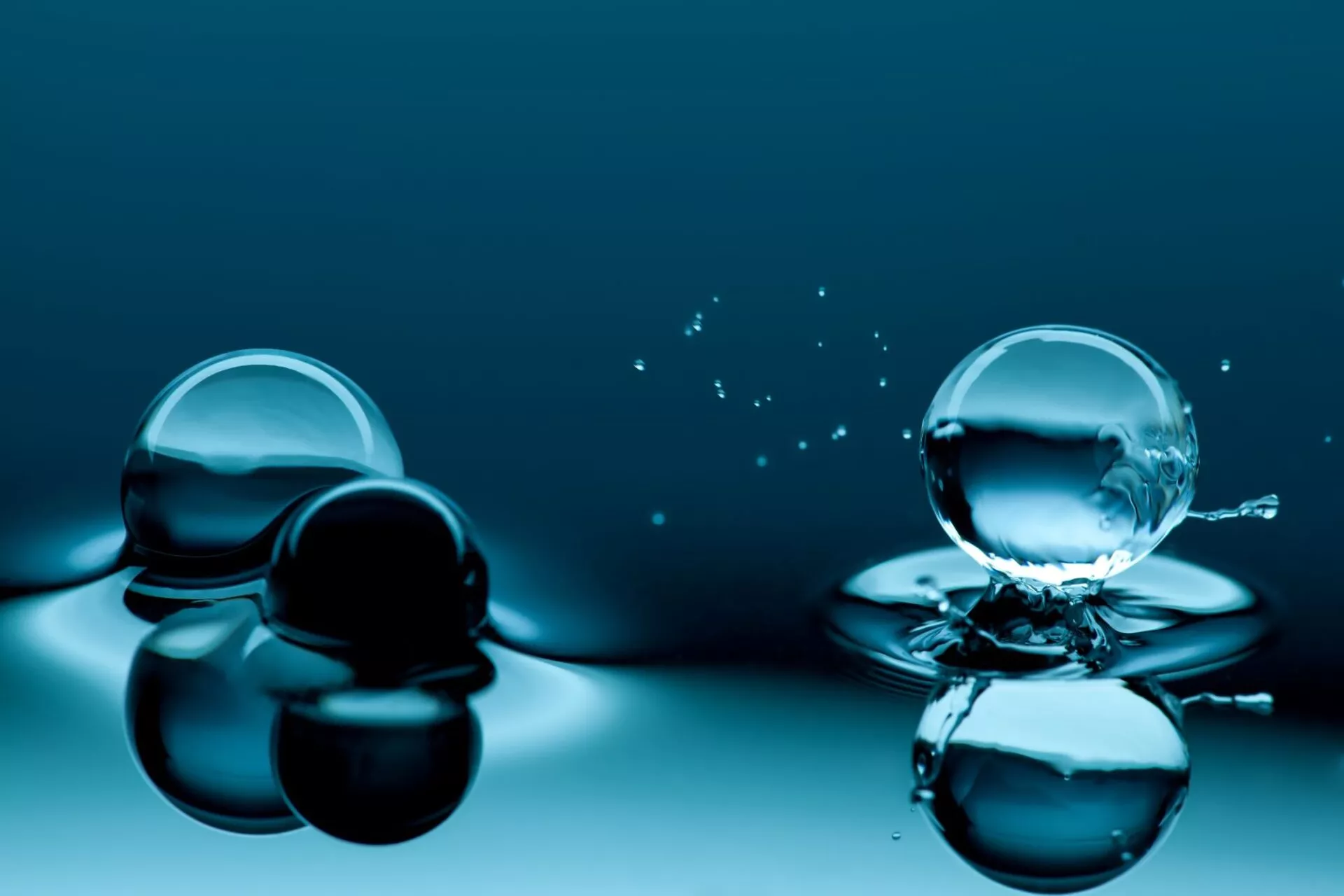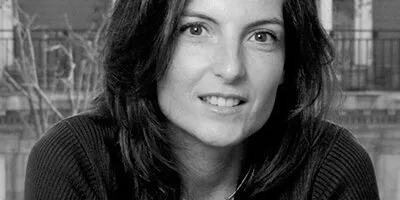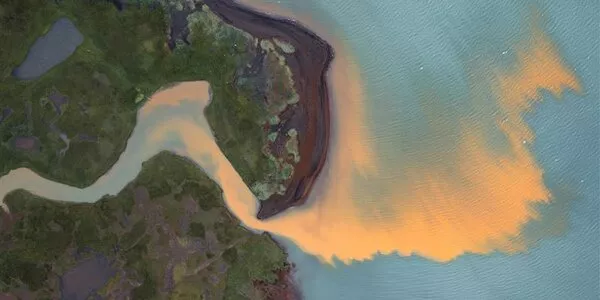
Blue Rush: the innovation race for fresh water supplies
Fresh water represents less than 3% of the Earth's total water supplies. As access to this vital resource comes increasingly under pressure from global warming, innovative solutions are needed to secure supplies. Alongside large companies, young "WaterTechs" are beginning to roll out promising solutions to save water.
Today, 2.2 billion people1 have insufficient access to safe drinking water. According to the latest report from the World Meteorological Organization, available water resources worldwide are decreasing and water stress is affecting more and more regions. This phenomenon is due to changes in water cycles caused by human activities (waste, intensive irrigation, soil quality degradation, etc.) but also due to the consequences of climate change on the water cycle (rising temperatures, increasing episodes of drought, etc.).
In 2023, glaciers, which contain approximately 60% of the world's freshwater2, lost nearly 600 billion tonnes of water, a 50 year record. In Europe, renewable water resources per inhabitant have decreased by 24% over the last 50 years, whilst 20% of the territory is now affected annually by increasing water stress. Even France is not immune, as shown by the intense drought and water stress of summer 2022.
Smart technology and the irrigation of agricultural land
Agriculture is the largest global consumer of fresh water, absorbing around 70% of available water resources3, according to the Food and Agriculture Organization of the United Nations4. In France, for example, the irrigation of agricultural land consumes more than half of all national freshwater, with the upward trend only set to continue given the ever more frequent incidences of drought. Faced with this stark reality, the so-called “smart irrigation” sector is undergoing a remarkable period of growth.
So how do such systems work? Sensors scattered across the fields tell the farmer where to water, how much and at what time, by measuring several parameters such as soil moisture, temperature, wind speed and the rate of crop moisture loss through transpiration.
In the face of extreme climate events, agrivoltaics, which involve installing solar panels across established farm-land, also appears promising. Pioneering in this field, the startup Ombrea has designed a system of adjustable shutters controlled by artificial intelligence that helps manage shade and prevent excessive loss of irrigation water through crop transpiration. This results in several resultant benefits: crop protection, solar energy production and water savings of up to 30% during the summer period.
Reuse of treated waste-water
The reuse of treated waste-water is another particularly effective approach to addressing multiple episodes of water stress. Yet, in France, only 1% of water is currently recycled, compared to 14% in Spain or 10% in Italy. But the "Water Plan", aimed at relaxing the water quality criteria required for watering green spaces or cleaning industrial equipment and facilities, should make it possible to reach 10% by 2030.
Artificial intelligence (AI) is playing an ever greater role in smart water management. Veolia, for example, has developed a "Reut" Box that optimises the processing of treatment plant waste-water for agricultural irrigation and urban maintenance, automatically adjusting parameters through predictive analysis. Aquatech Innovation has developed Aquaclear, a 100% biological system which, assisted by AI, adapts to seasonal variations, transforming waste-water into "bathing water" for ports or campsites. These intelligent technologies maximise energy efficiency, whilst ensuring constant water quality, making water reuse more accessible and efficient.
Optimising infrastructure
In France, the drinking water network extends over nearly 996,000 kilometres of pipeline infrastructure5, a significant proportion of which is increasingly showing its age. Each year, approximately 20% of the distributed water—nearly one billion cubic metres—is lost due to leaks alone. While the budget for network renovation has been estimated at more than 3 billion euros per year between 2015 and 2030, the use of artificial intelligence certainly represents an additional strategic lever. By cross-referencing data from sensors and employing predictive algorithms, AI enables more precise leak detection, anticipation of failures, optimisation of maintenance operations and securing service continuity, all while lowering operating costs.
Making desalination less polluting
While desalination has long been used to address water shortages, the technology is very energy-intensive, polluting and costly. Faced with the environmental and energy limitations of conventional desalination processes, many companies are now developing more innovative and sustainable solutions. For example, the startup Mascara is developing reverse osmosis technology, powered by solar energy. This system filters pressurised seawater using semi-permeable membranes, while limiting its carbon footprint and controlling saline discharges into the marine environment. In addition, AI technologies are used in the predictive maintenance of the filtration membranes, increasing their lifespan and performance. Real-time analysis of operating parameters helps predict possible malfunctions, adjust operational conditions and reduce operating costs.
Drawing Inspiration from the Global South
Having long lived with limited fresh-water supplies, the Global South6 has never hesitated to recycle treated waste-water for agricultural irrigation, street cleaning, industrial processes, watering green spaces and even human consumption.
For more than 50 years, Namibia has been a world pioneer in sustainable water management. The very first factory in the world capable of directly transforming waste-water into drinking water was inaugurated in 1968 in the capital, Windhoek. Today, it can supply 35% of the city's drinking water needs. This bold solution has inspired many countries to follow suit. Singapore, with its NEWater programme, has prioritised education to gain acceptance for this solution and is aiming for 55% recycled water by 2060. Israel reuses more than 80% of its waste-water for agriculture, thus helping with the greening of semi-desert areas. Finally, California, affected for many years now by chronic droughts, operates one of the largest recycling plants in the world, where recycled water is reintroduced into groundwater aquifers.
Faced with the increasing scarcity of water, innovation is therefore essential in building a more efficient, resilient and equitable water management system.
Europe, innovation champion
In July 2024, the European Patent Office (EPO) published a report on innovation trends in water-related technologies, based on international patents filed between 1992 and 2021. According to this study:
Innovation in water-related technologies is progressing, but at a rate well below that of other sectors, representing only 0.33% of international patents.
Europe is leading in water-related inventions, followed by the United States and Japan.
Large companies dominate and universities and public research organisations are making progress.
The treatment of water (particularly waste-water and sludge) is the field responsible for the most innovations and new inventions. Technologies related to drinking water recovery are especially experiencing strong growth.
Contributing to the transition towards a more sustainable maritime economy to protect oceans
Financial institutions also have a key role to play in the protection of the oceans and marine ecosystems. Societe Generale has adopted a structured approach around four levers:
Financing the transition of maritime transport,
Framing sensitive sectors (fisheries, aquaculture, transport) with robust environmental policies,
Supporting conservation initiatives, such as the non-profit organisation The Ocean Cleanup, which develops technologies to remove plastics from oceans and rivers,
Mobilising stakeholders around ocean issues. The Group contributes to collective publications alongside other financial institutions, companies, and academic partners, and engages its employees to embed ocean-related issues into the Group’s culture. The solidarity sports challenge, Move for the Oceans, will mobilise more than 20,000 employees across more than fifty countries from October 2 to 12, 2025.
Learn more about Societe Generale’s actions to preserve the oceans
Contributing to ocean preservation - Société Générale
Sources
1 - UNESCO Annual Report published 22 March 2025
2 - United Nations World Report
3 - Food and Agriculture Organization of the United Nations (FAO) Report, 2021 estimate
4 - The Food and Agriculture Organization of the United Nations (FAO)
5 - https://aquagir.fr/distribution-eau-potable/connaissances/la-distribution-de-leau-potable-en-france/
6 - https://ecotime.ca/fr/2025/03/06/recyclage-des-eaux-usees-namibie/





